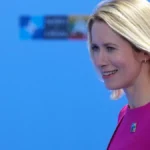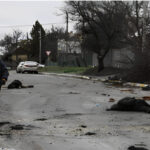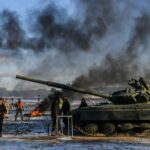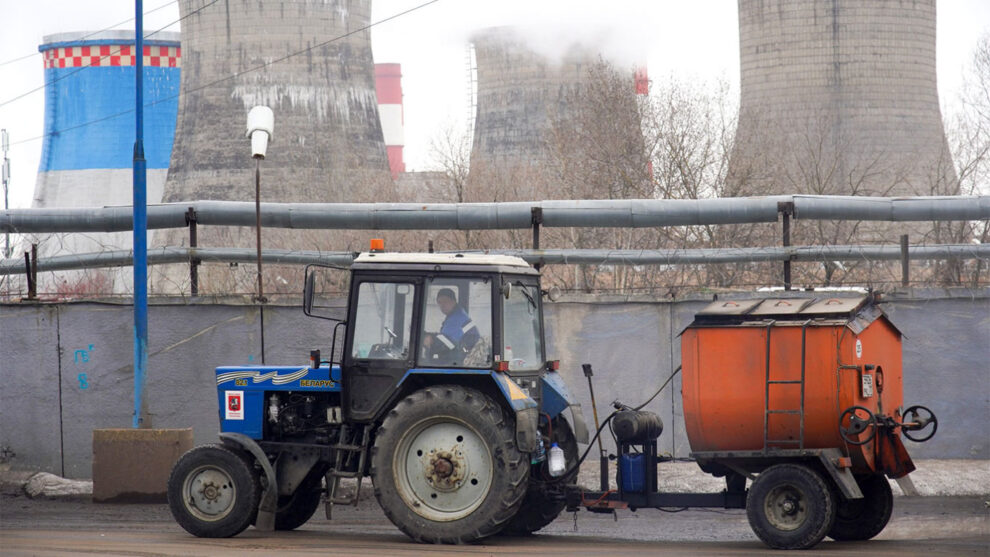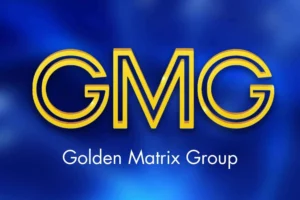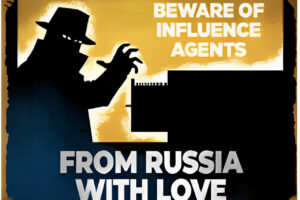The Kremlin has been breaking a lot of records lately, and not in a good way. One dubious title is that of the most sanctioned country: since its full-scale invasion of Ukraine last year, Russia has become subject to more than 13,000 restrictions. That’s more than Iran, Cuba, and North Korea combined.
Still, Russian GDP fell just 2.1%in 2022, and is forecast by even the cautious International Monetary Fund (IMF) to grow in 2023 — unlike the UK economy, for example. This allows the Kremlin to claim that sanctions are ineffective, but there is a qualitative as well as quantitative effect. Sanctions have radically changed the modus operandi of the Russian government’s economic bloc — though, again, not in a good way.
Despite the system of state capitalism in place in Russia, before the war, its economic policy was largely focused on technological development, diversifying exports away from the country’s dependence on fossil fuels, and the relatively free movement of capital. Now those elements have been replaced with capital controls, the labeling of countries as either friendly or hostile, the yuanization of payments, and the militarization of budget spending. Nor is there any prospect of that changing for a long time to come. Paradoxically, sanctions have strengthened Fortress Russia in the short term by isolating it from global shocks, while weakening it in the medium and long term.
Following Russia’s attack on Ukraine in February 2022, the United States and European Union were quick to unleash new waves of sanctions in response, freezing Russia’s foreign exchange and gold reserves and limiting the Russian Central Bank’s ability to use dollars and euros. It was hardly surprising that the shell-shocked Russian business community and most officials were bracing themselves for the imminent collapse of the economy.
Yet the swift reaction of the government’s economic bloc succeeded in cushioning the blow. It put restrictions on moving capital and increased the key interest rate to 20%, stemming the capital outflow from the banking system, which had hemorrhaged more than 2 trillion rubles ($30 billion) in the first two weeks of the war. By the end of April, the growth in interest rates on short-term deposits and ban on withdrawing foreign cash had forced Russians to return almost 90% of the funds they had withdrawn from their accounts.
The lack of serious problems in the banking system meant that the Russian economy stayed afloat, and the panic subsided. But the downside to this short-term victory is the restrictions on the movement of capital. Central Bank chair Elvira Nabiullina once praised the lifting of those restrictions as “an important economic policy achievement.” Capital control measures, whose use has long been considered ineffective, will now be in place for a long time to come. It may even prove necessary to introduce tougher measures.
Another aspect of Russia’s response to sanctions was an explosion in the number of countries deemed to have committed “hostile” actions against Russia. Despite the fact that there are no clear guidelines for what exactly constitutes “hostile” actions, this designation, rather than pragmatic economic interests, now appears to be the main criterion upon which trade relations and foreign economic policy are based. It has resulted in Moscow firming up its ties with countries from Iran, Turkey, and the United Arab Emirates to Myanmar and African nations. Russian companies have even joined an infrastructure consortium set up by the Taliban in Afghanistan.
Geopolitical considerations will continue to determine Russian trade policy, including production chains, for the foreseeable future. The resulting costs will be borne by consumers in the form of higher prices and reduced quality of goods.
Meanwhile, Moscow’s relationship with its key remaining ally — Beijing — increasingly resembles economic dependence. Trade between the two countries grew by nearly one-third to reach a record $190 billion in 2022, according to Chinese customs statistics.
Energy commodities account for more than two-thirds of Russian exports to China: Russia is China’s second biggest supplier of oil, and its fourth biggest of LNG. The downside of these record-breaking exports is that a monopsonist buyer is able to influence prices, while Russia’s negotiating position is becoming much weaker.
Russia’s imports from China, meanwhile, consist not only of consumer goods, but also, increasingly, high-tech goods. Imports of Chinese trucks, excavators, and vehicle parts grew significantly in 2022. Despite Western restrictions on supplying Russia with semiconductors and microchips, the country gets most of its electronics and semiconductors from Chinese companies. Giants like Huawei may be wrapping up their operations in Russia out of concern for their global business, but smaller Chinese companies are entering the Russian market all the time.
Payments to and from Chinese partners are largely conducted in the yuan rather than in rubles. The proportion of payments for Russian exports and imports made in yuan has also soared in the last two years.
President Vladimir Putin has said that Russia is ready to switch to the yuan in its dealings with other countries, too. The much-vaunted de-dollarization of the Russian economy is simply turning into its yuanization.
Of course, anyone wishing to see a silver lining to Russia’s current economic situation can do so. High inflation in the U.S. and the corresponding growth in interest rates there has hit the value of U.S. banks’ bond portfolios, and the March collapse of three U.S. banks sent markets into a spin, prompting talk of “echoes of the global crisis” among analysts. Meanwhile, the Russian economy — safely isolated from the global financial markets by sanctions — escaped unscathed.
Oil and gas prices are now more or less the only channel by which external shocks can reach Russia. If there is a global recession, which will cause a significant fall in those prices, then it won’t all be plain sailing for the Russian economy. But that’s still far from the most likely outcome. Furthermore, the OPEC+ countries — including Russia — have agreed to cut oil production from May to October in order to avoid a price slump. Russia has gone one step further and changed the formula for calculating oil and gas taxes to minimize losses to the budget.
The flip side of being isolated from external shocks is Russia’s growing dependence on its few remaining foreign partners. Sanctions impacting the tech sector have already stripped Russia of its ability to develop new offshore energy projects and hard-to-reach mineral deposits.
They have also limited its access to turbines and technology for building modern tankers, locomotives, cars, next-generation communication networks, and other high-tech products, as well as removed Russia from the global discussion over artificial intelligence and quantum computing. One way or another, therefore, the Kremlin will have to build any plans for future economic development around the energy trade.
The constant focus on commodity prices and sharp increase in the militarization of state spending (to about a third of the budget) means Russia’s economic development will be frozen for a long time to come. Even once the active phase of the war is over, military spending is unlikely to decrease so long as any form of Putinism persists.
The Kremlin will need to replenish its arsenal and prepare for a new war. The transfer of military technology to civilian sectors, however, has never had much success in Russia. Nor is there any point in expecting anything good to come from reverse industrialization and the return to obsolete technology.
Last century, Russia also pursued an economic policy built around trade in raw materials and a bloated military-industrial complex. It paid a heavy price for that inefficiency in the 1990s. Modern Russia looks set to repeat that mistake.
Source : TheMoscowTimes




